The 7 Best Islands In Thailand
Fine white sand, clear blue waters, hammocks swaying in the sea breeze, and the sun bathing you as you relax…...
Read more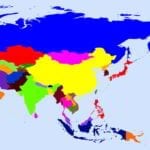
Population: 4,560,667,108 (2018)
Area: 17,212,000 sq mi

Kathleen is the Live and Invest Overseas Founding Publisher. She has more than 30 years of hands-on experience traveling, living, and buying property around the world.
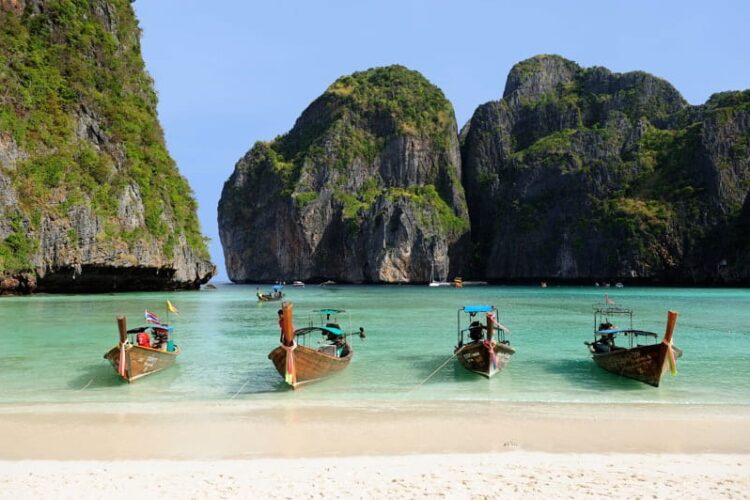
Asia is the world’s largest, most populated and diverse continent. It is subdivided in five different regions and composed of 48 different countries. Asia is located in the north and eastern hemisphere, and it shares a landmass with both Africa and Europe. In Asia you will find all kinds of extreme climates, resulting in a wild variety of flora and fauna. Here you’ll also find the highest and lowest points of Earth. As a continent, Asia can be considered the home to many civilizations and many major religions.
“Affordability” is usually the first or second reason most folks give for wanting to retire overseas, and Asia is far and away the cheapest place on earth to live well… but Asia offers much more than just affordability.
Everyone is different, but other reasons tend to include:
You can enjoy white-sand beaches, tropical rainforests, sacred mountains… Modern and colonial architecture, majestic temples, river cities, beach towns… Cutting edge technology, the world’s fastest internet, and welcoming locals.
Nowhere else in the world gets you so much for so little money.
Start Your New Life Today, Overseas
Understanding verbal and non-verbal communication and conveying respect in a culturally appropriate manner can be challenging. Americans tend to be outspoken and verbally expressive. We are informal in our terms of address, using first names and saying “please” and “thank you” effusively. We look people straight in the eye when we talk to them.
In the Far East, a smile is often used to convey many different emotions, from happiness and amusement to embarrassment or even anger. ‘Please’ and ‘thank you’ are much more commonly expressed by smiles or slight bows. Direct eye contact is considered aggressive and that people look down and slightly away if they want to show respect when speaking to you.
If you’re a Christian, you likely won’t be in the majority. Most of your neighbors will probably be Buddhist, Taoist, Hindu, or even Muslim. Some cities, such as Saigon, Nha Trang, and Hua Hin, have large numbers of practicing Christians. Other areas, such as Kuala Lumpur and Chiang Mai, have significant Christian minorities. Jewish people make up only a very tiny percentage of the population here.
You’ll notice a difference in the food, though globalization has had a huge impact in this area. In general, food is fresher and healthier in Asia. The distance food travels from farm to table is usually much shorter. Meat makes up a smaller percentage of the diet for most people than in a typical Western diet. Most Asian main dishes are stir-fried or grilled, rather than baked or deep-fried, and are served with assorted fruits and vegetables.
Savory flavors are more prevalent than sweet. You’ll see plenty of rice and noodles, but rarely potatoes. However, restaurants catering to Western tastes are sprouting up everywhere. McDonalds, Starbucks, Burger King, KFC, and Pizza Huts are common throughout the region, and many independent restaurants also serve Western dishes. Living in Asia, you can choose your diet. Go local or not, it’s up to you.
The architecture is different in this part of the world. People live closer together here, and large, multi-generational homes are common. Large, sprawling yards are uncommon. You find a lot more solar power here than in North America. Newer buildings are made from fire- and insect-resistant concrete and brick. Most houses are at least two stories tall to take advantage of cooling breezes, and many are four or five stories high. Older homes are typically made from jungle hardwoods, such as teak. Most residences have the same amenities as their counterparts in the West—electricity, indoor plumbing, cable TV, and so on. Floors are usually tiled or may be carpeted; unless you are really in the poverty-stricken hinterlands, they’re not dirt!
Roads in Asia are generally paved. You find very good roads in Singapore and Malaysia, and most roads in Thailand are also quite good. There are plenty of multi-lane controlled-access highways. Elsewhere, roads may be dirt or gravel or paved but in poor repair—but no more so than you find in Mexico or in any developing country in the Western Hemisphere.
You see more motorbikes on the roads in this part of the world, partly because they cost less than automobiles, but also because they are more fuel-efficient. You also see plenty of Fords, Chevys, and SUVs. No one other than tourists use elephants as a means of transportation any longer! Trains are used more for public transportation than they are in the Western Hemisphere, and they tend to be clean, safe, and efficient.
As is common in many parts of Europe and Central and South America, shopping at the market is a part of daily life. It’s a good opportunity to buy fresh local produce while immersing yourself in the local culture. Bargaining is the norm in Southeast Asia, and shopping is a time when knowing a bit of the local language can be a benefit. However, many non-bilingual foreigners have gone to the market armed with nothing more than a calculator and a smile and lived to tell the tale…
In the markets, you’ll discover locally grown vegetables, such as bok choy and kai lan, and delicious fruits including dragon fruits and mangoes. When you compare prices with imported produce, such as apples or iceberg lettuce, you’ll likely develop a taste for these inexpensive alternatives. Of course, there are also plenty of supermarkets and mom-and-pop stores where you can shop.
Start Your New Life Today, Overseas
Developing friendships and becoming a part of the community is the same in Southeast Asia as it would be anywhere in the world. People in Southeast Asia enjoy getting together for dinner, dancing, watching TV, and playing cards. Most people work during the day and relax at night…just like everywhere. Parents dream of seeing their children go to college and making a better life, and children study hard to make their parents proud. Higher education is highly valued in Asia, perhaps more so than in the West.
Living in Asia is very different from living in your own country in many ways, but, in some fundamental ways, life is very similar. Asia seems exotic because it is so far away, but this is something that probably meant much more 30 years ago before the Internet made the world so much smaller.
Asia boasts a number of the most cost-friendly places anywhere to call home right now. Pockets of Thailand, Vietnam, Malaysia, Indonesia, and the Philippines, for example, can be absurdly cheap.
Living on this side of the planet, you’d also have access to some of the world’s most beautiful beaches.
Your life would be full of the exotic, the unexpected, and the adventuresome.
That is to say, the culture shock would be significant. For some, this reality is thrilling and invigorating… for others, intimidating or even terrifying.
In the past, foreign retirees in Asia didn’t legalize their status. Historically—in some cases because it seemed easier and in others because formal residency programs weren’t an option—expats in this part of the world have relied on the “border run” approach. They’d leave the country where they were living briefly, then return with a renewed tourist visa.
However, today, more and more countries in the region are cracking down on the practice which, in fact, can be as or more expensive than obtaining legal residency. Also, more formal legal residency options are available…
Meaning the border-run lifestyle is no longer necessary in Asia.
Still there’s the practical downside of geography. Thailand, Malaysia, Vietnam, Indonesia, etc., are literally on the other side of the world. You’re not hopping back and forth between your new home in Asia and your old one in North America for grandchildren’s birthdays, for example.
That’s why it can make sense to approach Asia not as a full-time choice but, instead, to create a retire overseas plan that allows you to enjoy the super cheap and super exotic benefits of Asia part-time.
Start Your New Life Today, Overseas
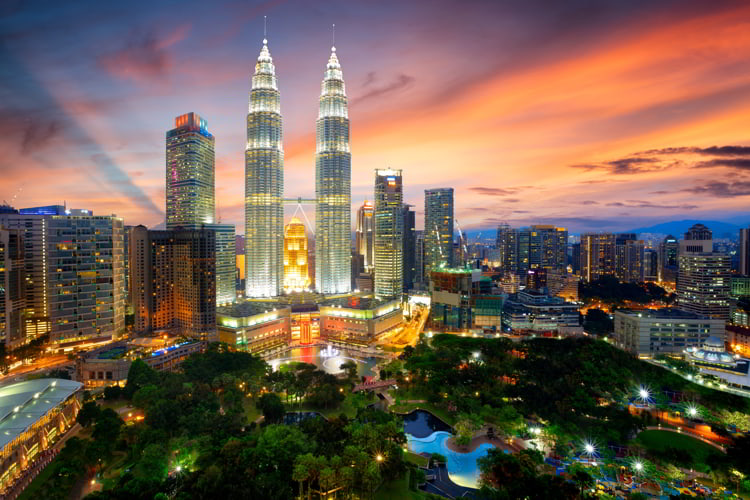
Adobe Stock/Patrick FotoAsia boasts the most cost-friendly places anywhere on Earth to call home.
Pockets of Thailand, China, Vietnam, and India, for example, can be absurdly cheap.
Living on this side of the planet, you’d also have access to some of the world’s most beautiful beaches. Your life would be full of the exotic, the unexpected, and the adventuresome.
Specifically, where should you be considering if you’re in the market for an exciting new life on an uber-modest budget?
Here are your 10 best lifestyle options in Asia:
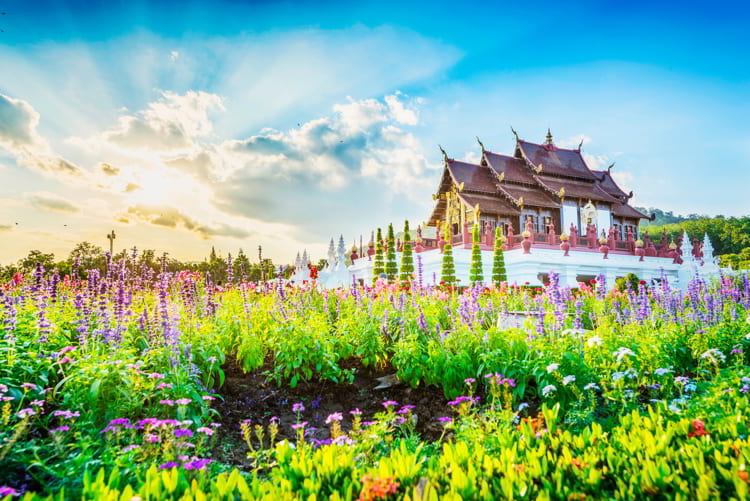
Since the 1800s, the Thai city of Chiang Mai has been luring expats from the West with its uber-low cost of living, great weather (especially compared with elsewhere in Thailand), rich history, and distinct culture.
The heart of this city founded in 1296 lies within its old city walls where ancient and modern Buddhist temples coexist with residential and commercial neighborhoods. Modern Chiang Mai has grown beyond the ancient walls and offers mega malls, multinational grocery and department stores, and other trappings of 21st-century living.
The biggest advantage to life in Chiang Mai is its cost in general and of health care in particular. A couple can live here comfortably on as little as US$1,200 per month, and you can see an English-speaking doctor for US$20.
The biggest downside can be air pollution during the annual burning season, mid-February through mid-April, when local farmers burn their fields. Many expats travel outside the country during these months.
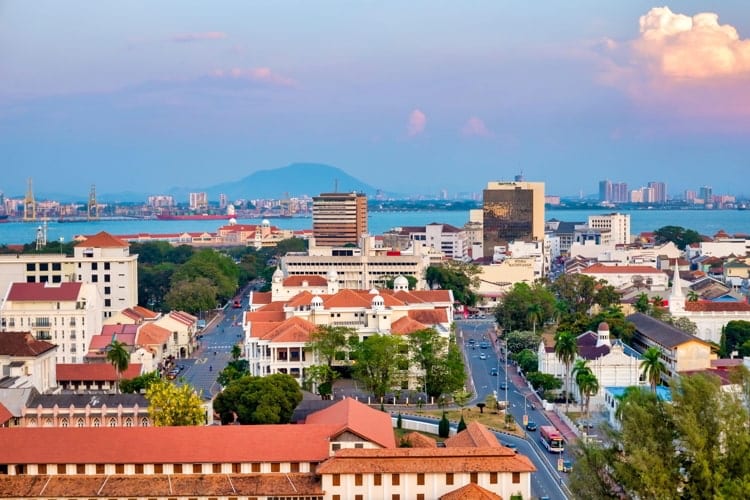
Penang isn’t some lost-in-time outpost of the former British Empire. Combining all that’s appealing about island and city life, the “Pearl of the Orient” is one of Southeast Asia‘s most livable destinations. Low costs are a big part of the appeal. In addition, health care is excellent, foreigners are welcome, and the country is safe and stable.
The population is a melting pot of Malay, Straits Chinese, Chinese, Burmese, Arab, Thai, Indonesian, and Indian. Thanks to its colonial past, English is the language that holds the ethnic stew together.
Life here is both traditional and 21st century, exotic and comfortable. Beyond the high-rise apartments of modern George Town is one of the best-preserved old cities in Asia, and almost on the city’s doorstep are stylish seaside settlements with palm-fringed sandy beaches and a backdrop of lush rainforest.
Malaysia is also one of the world’s most tax-friendly jurisdictions. As a resident of this country, you are taxed only on income derived from within the country, meaning that even income you remit to Malaysia is not taxed as long as it was earned somewhere else.
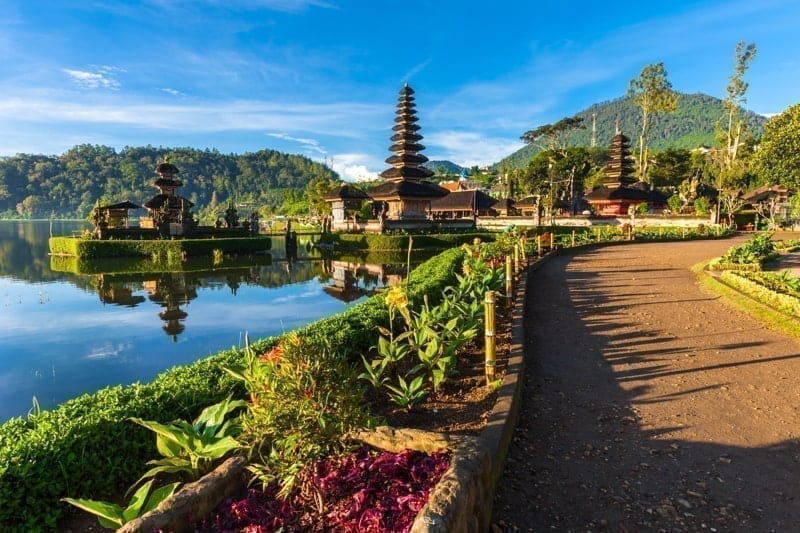
Bali enjoys a well-deserved reputation as one of the most beautiful tropical islands in the world. The jungle is lush, volcanoes rise into the clouds, and terraced rice fields cascade down the valleys. Multitiered Balinese temples adorn even the smallest villages.
The coastline is a picture postcard, and the ocean, never far away, offers world-class diving, surfing, snorkeling, parasailing, and all other manner of water sports.
In the city are bars, dancing, discotheques, and dining options from excellent street food for a pittance to white-glove and five-star.
On the southwest side of Bali is the small town of Sanur, an unpretentious suburb of the larger city of Denpasar.
Quiet and laid-back, Sanur feels far removed from the crowds of tourists who flock to Bali for vacations and honeymoons. Sanur can be a top choice for indulging in a five-star, luxury lifestyle on a three-star budget.
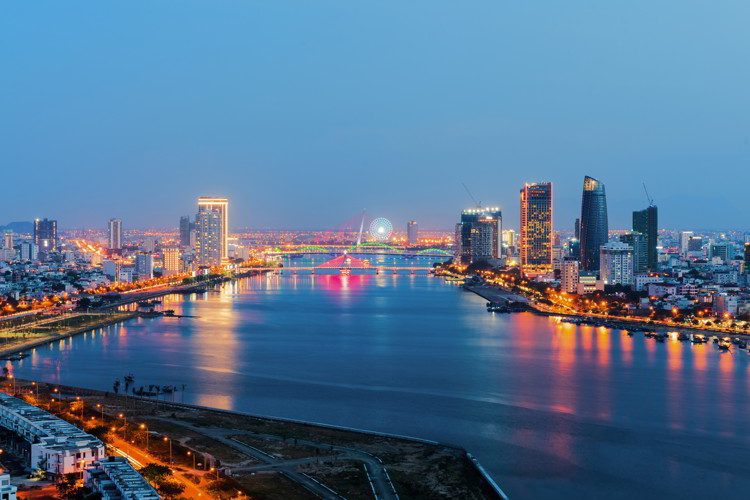
For many, Vietnam conjures up images of a backward communist country, top-heavy with red tape, clogged with inefficiencies. This stereotype couldn’t be further from the truth in the country’s third-largest city Da Nang, which manages to be forward-thinking and provincial all at once.
The roads and architecture are modern, but most of the businesses are still family-run, with almost no big international brand names, fast-food joints, or coffee shop chains to be found.
This is a fast-moving city of skyscrapers, bridges, and malls with a palpable entrepreneurial spirit, energy, and enthusiasm. Meantime, women ride sidesaddle on the backs of motorbikes, legs dangling over the side, chauffeured by their colleagues or family.
Some don the traditional Vietnamese ao dai, the colorful two-piece outfit with the top extending to the ankles, a long slit down one side, long white pants underneath; others wear elbow-length gloves to add a bit of class while protecting against the elements. It can feel like an old movie is playing out in front of you.
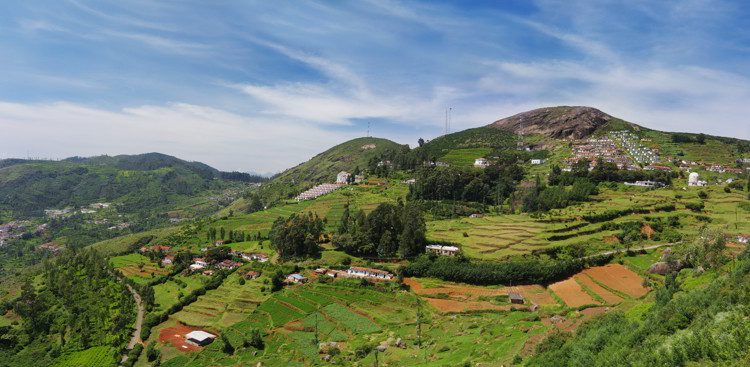
When John Sullivan, agent of the East India Company and founder of Ootacamund, stumbled upon what is now popularly known as Ooty, he described it as more like Switzerland than any country in Europe. Cool weather, wooded hills, and plenty of freshwater prompted the establishment of a hill station, which served British officials as a summer resort during India’s colonial period.
Today, Ooty’s natural beauty continues to draw visitors. Perched at 6,000 feet above sea level, the average temperature here is 58 degrees—a refreshing contrast to the rest of steamy southern India. The town is endowed with botanical and rose gardens, parks, lakes, a golf course, and several historic buildings dating to the early 1800s.
The best way to get the lay of the land is to take a ride on the Nilgiri Mountain Railway (a UNESCO World Heritage Site), which slices through the surrounding hills and offers a glimpse of terraced tea estates and the “English fruit” (strawberry, plum, and peach) cultivation the area is famous for.
Ooty is a compelling option for a quiet hill-country retirement on a small budget.
Start Your New Life Today, Overseas
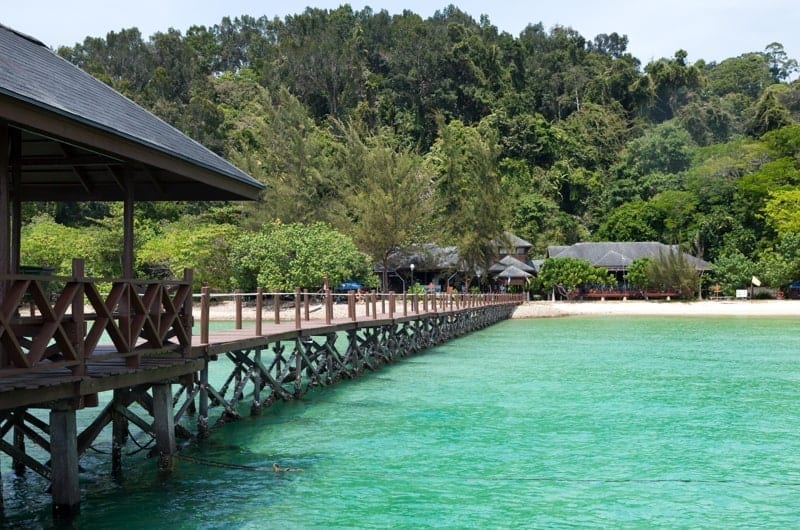
Kota Kinabalu is one of the world’s most livable beach cities—civilized, safe, clean, peaceful, and organized. KK, as it’s known, with a population of 800,000, is also lively, vibrant, and modern with every amenity, brand name, food variety, and entertainment option you could want. You won’t find orangutans swinging from trees, and no one walks around with bones protruding from pierced nostrils.
KK is Pleasantville or Mayberry circa 1950s transplanted to Asia, and Westerners are welcome. Its biggest practical advantages are the low cost of living and the high standard (and low cost) of health care.
Kota Kinabalu is small and walkable, less than 2 miles from end to end. Life revolves around the water and is lived out-of-doors. Living here, you’d fill your days snorkeling, diving, boating, and ferry-hopping from the city center to neighboring islands.
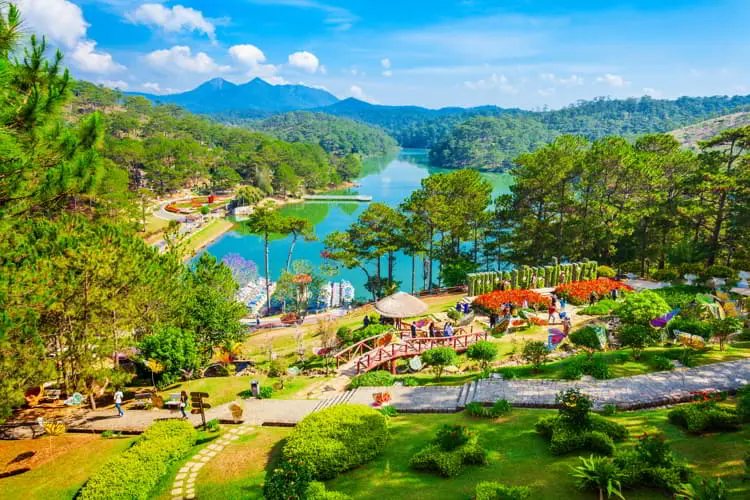
Perched at 1,500 meters in the Lang Biang Plateau, Da Lat was discovered by 19th-century French colonists seeking respite from the heat and humidity of city life in Vietnam. Da Lat is abundantly green with lake views reminiscent of an Alpine ski town. The atmosphere is tranquil and contemplative.
French bourgeois architecture was imported in the form of grand hotels, villas, rose gardens, and churches to create a city that became known as Le Petit Paris, complete with its own miniature Eiffel Tower.
Today Da Lat is popular among Vietnamese tourists, especially newlyweds; this is the honeymoon capital of Vietnam. The city’s greatest appeal can be its eternal spring climate; temperatures average 62 degrees year-round.
Vietnam is the world’s second-largest producer of coffee, and much of this comes from the Central Highlands around Da Lat.
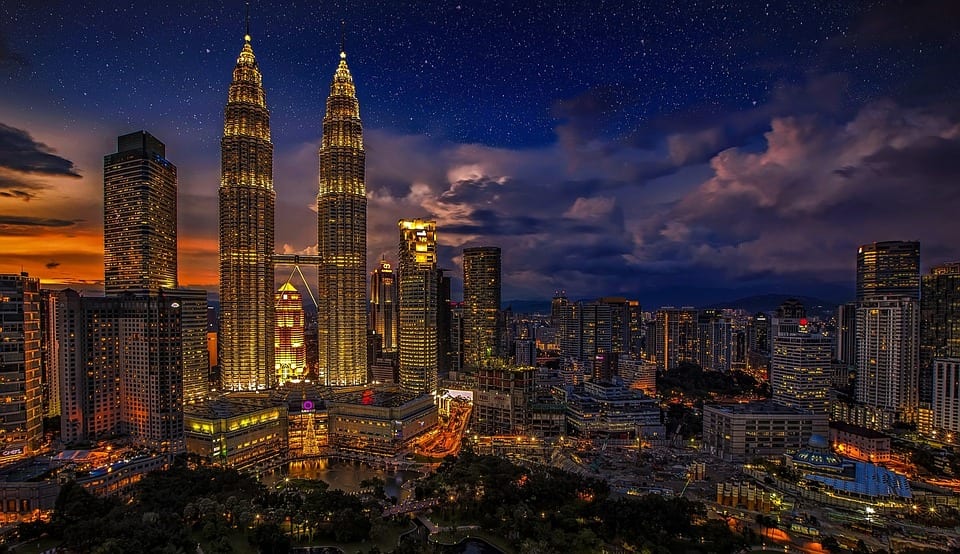
In the shadows of this ultramodern setting, less than a 20-minute walk from the city center, life in the ancient Malay village of Kampung Baru carries on. Roosters roam freely and monkeys swing from tree to tree.
Foreigners are genuinely welcomed in this former British colony. The British are gone but left their mark in the form of British-colonial architecture and driving on the left. English is the language of commerce, required learning for all Malaysian children, and the primary spoken language for many Malaysians.
Health care is first-rate, public transportation is state-of-the-art and efficient, and the tap water is safe to drink. Beautiful beaches are a short drive or flight away, and cool mountain retreats can be reached in less than an hour.
Racially and ethnically diverse, the population of KL is 38% Malay and indigenous, 43% Chinese, 10% Indian, and 9% foreign.
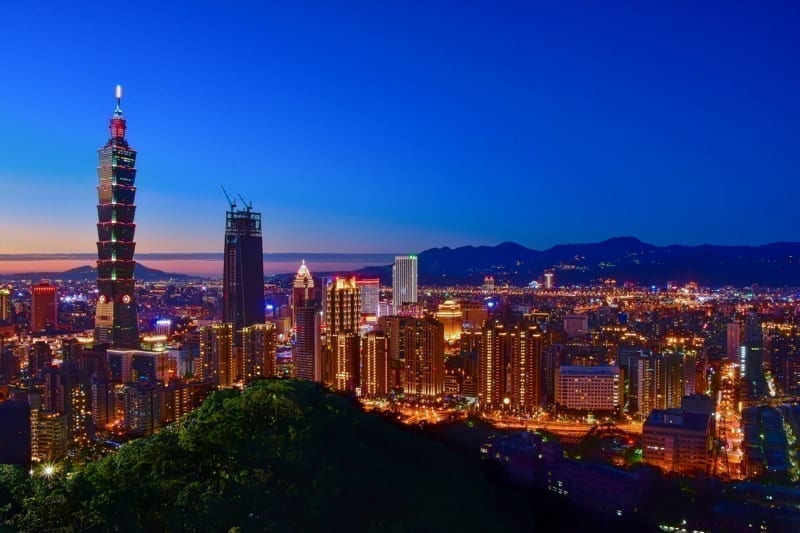
Taiwan’s capital city is a hyper-efficient and high-tech Asian metropolis, building a reputation for innovation in everything from its award-winning Mass Rapid Transit and light rail systems to the touchless technology found throughout its public spaces and its approaches to tackling environmental issues.
At the same time, remnants of the past are everywhere. Architectural and cultural landmarks scattered around the city remind you of the island’s many phases of history. The best way to experience Taipei’s culture, though, is through its cuisine. From night markets bustling with food stalls to high-end eateries, Taipei is a culinary wonderland that impresses even the most pretentious foodie.
This safe, clean, well-organized, and interesting city has all the appeal, infrastructure, amenities, and comforts of the region’s A-list destinations like Singapore and Hong Kong—with one big difference. The cost of living in Taipei is within the reach of most retirees’ budgets.
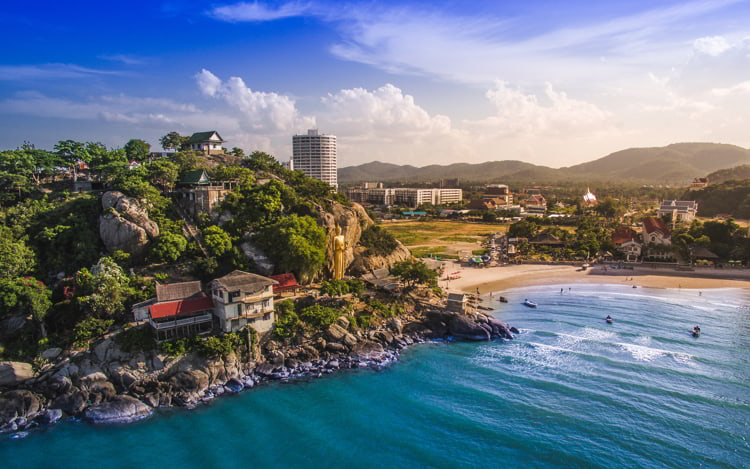
Few places in Southeast Asia meet the requirements of a “developed” retirement haven. Popular seaside towns in the region can be crowded with young backpackers looking for the next party. Hua Hin, stretched along a sheltered beach on the west coast of the Gulf of Thailand, with good year-round weather and a large foreign community, is an important exception.
A retiree can afford a high standard of living—including days on the greens (the city is home to nine golf courses) and regular dinners out at first-class restaurants—on a modest budget.
The standard of local medical care is good, and you’re less than three hours from Bangkok, which boasts some of the region’s top hospitals.
Housing options include modern condos, beachfront homes, and secure, modern gated communities. The big foreign community connects through reading clubs, festivals, cycling clubs, soccer leagues, wine tastings, and darts tournaments.
Hua Hin is such an inviting place that, since the 1920s, it has been the summer home of much of Thailand’s royal family.
Until next time,
Kathleen Peddicord
Founding Publisher, Overseas Opportunity Letter
Fine white sand, clear blue waters, hammocks swaying in the sea breeze, and the sun bathing you as you relax…...
Read moreMany North Americans looking to make a move overseas discount Europe right off the bat, thinking a retirement there is...
Read moreMany North Americans looking to make a move overseas discount Europe right off the bat, thinking a retirement there is...
Read moreEnglish-speaking islands offer island life with some of the familiarity of home. Visit or relocate to any of these islands and you can relax, knowing you will be able to talk with the local people. Integrating into the community and making friends circles is important to anyone overseas. The ability to converse in your mother tongue with the locals is a big benefit. For those who are keen to learn, many of these islands speak more than one language. You...
Read more
© 2008 - 2024 Live and Invest Overseas - All Rights Reserved.
Sign up for FREE and learn how to live the good life on a modest budget, find bargain property, and more. Plus, check out our free report on the 10 BEST PLACES TO RETIRE.
RETIRE OVERSEAS AND LIVE LIKE ROYALTY
© 2008 - 2024 Live and Invest Overseas - All Rights Reserved.